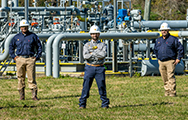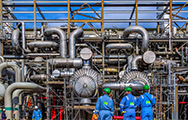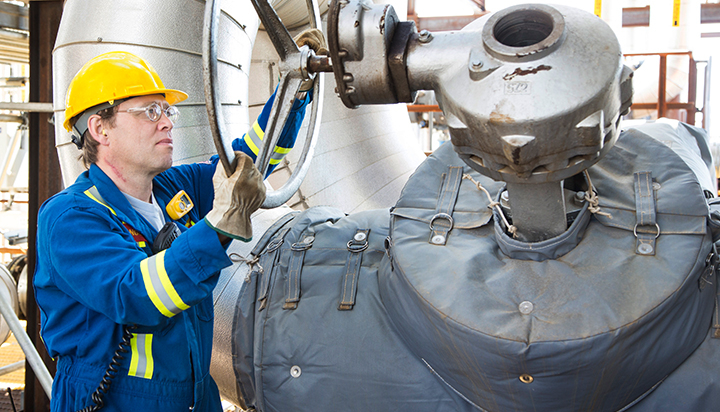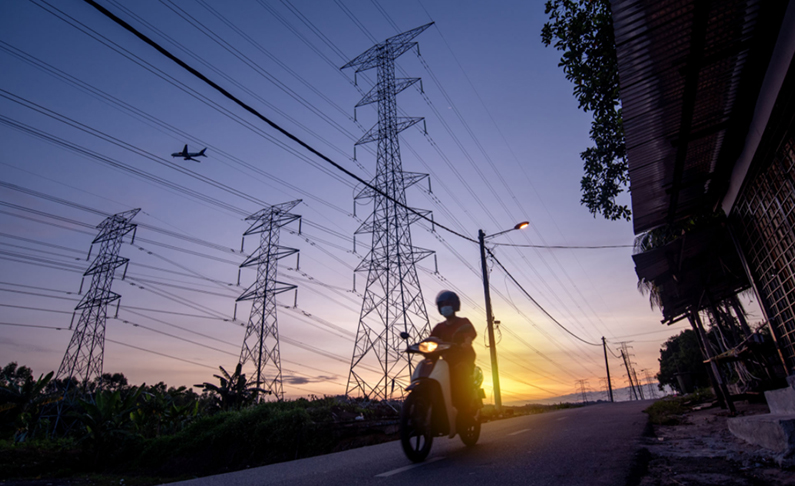Capturing carbon emissions
We invest in projects to capture and store carbon dioxide (CO2) and we are exploring new ways of using CO2 once it has been captured. Carbon capture and storage (CCS) technology is necessary to achieve the goals of the Paris Agreement, according to the majority of climate change scenarios produced by the IEA, IPCC and Shell.
Shell is involved in seven of the 51 large-scale CCS projects globally, listed in 2019 by the Global CCS Institute. Accelerating the pace of CCS deployment requires continued collaboration between governments, industry and investors, among others, to help unlock financing capacity, accelerate technology development and encourage public support. We recognise the scale of the challenge in developing CCS globally as quickly and as widely as needed.
In 2020, Shell invested around $70 million in CCS. This included progressing opportunities and operating costs for CCS assets in which Shell has an interest. We seek to have access to an additional 25 million tonnes a year of CCS capacity by 2035 – equal to 25 CCS facilities the size of our Quest CCS project in Canada (Shell interest 10%).
|
|
Northern Lights |
TCM CO2 capture test and research facility |
Gorgon |
Quest |
|
|
Post final investment decision |
Operating |
Operating |
Operating |
Location |
|
Norway |
Norway |
Australia |
Canada |
CO2 source |
Gas power |
|
■ |
|
|
Refining/chemical |
|
■ |
|
|
|
Hydrogen |
|
|
|
■ |
|
Gas |
|
|
■ |
|
|
Industrial (third party) |
■ |
|
|
|
We are a member of the Oil and Gas Climate Initiative (OGCI), which is taking steps to unlock large-scale investment in carbon capture, utilisation and storage with a focus on decarbonising industrial hubs around the world, including in Canada, China, Norway, the Netherlands, the UK and the USA.
In Norway, we are working with Equinor, Total and the Norwegian government to create a market across Europe for industry to capture and safely store CO2. In 2020, the government approved the final investment decision for the Northern Lights CCS project, which will transport CO2 from industrial sites by ship to a plant on Norway’s west coast. CO2 will then be piped to a reservoir around 3,000 metres below the seabed to be safely and permanently stored.
Using ships to transport the captured CO2 enables more sectors to take advantage of CCS technology, for example, industrial companies based far from a pipeline or suitable CO2 reservoir.
We are also part of an industry partnership with BP, Eni, Equinor and Total that in 2020 took ownership of the Net Zero Teesside project, which was launched by the OGCI to build the UK’s first zero-carbon industrial cluster. The BP-operated project will build a transportation and storage system to gather industrial CO2, compress it and store it safely in a reservoir under the seabed.
By the end of 2020, our Quest CCS project had captured and safely stored more than 5.5 million tonnes of CO2 since it began operating in 2015. In Australia, the Chevron-operated Gorgon CCS project (Shell interest 25%), which started operating in August 2019, had stored more than 4 million tonnes of CO2 by the end of 2020. Gorgon is the largest CCS operation in the world.
How carbon capture and storage works
See what is involved in the process of capturing and storing carbon dioxide deep underground





